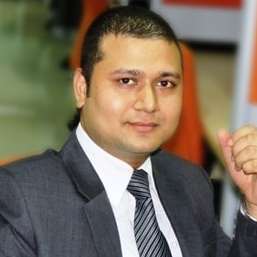Electrospun Nanofibrous Membranes and Their Processes and Applications
A special issue of Membranes (ISSN 2077-0375). This special issue belongs to the section "Membrane Applications".
Deadline for manuscript submissions: closed (31 December 2020) | Viewed by 2933
Special Issue Editors
Interests: nanocelllose; carbon nanotubes and 2D nanosheets in membrane technologies; adsorption and catalysis based water purification
Interests: membrane-based separation materials and technologies; functional electrospun membranes and advanced oxidation
Special Issues, Collections and Topics in MDPI journals
Special Issue Information
Dear Colleagues,
Water purification remains a hot topic in both academia and industry because of the ever-increasing freshwater crisis. Membrane-based technology provides good performance in water purification and has grown into the predominant strategy due to its suitability for continuous operation, low chemical mass, automated process control, and high selectivity. Nevertheless, the currently used membranes still do not meet people’s expectations because of their low water flux, thereby requiring high operating pressure that involves high energy costs. Therefore, researchers and engineers are exploring novel materials for membrane fabrications with enhanced performance for increasing cost and energy efficiency.
Electrospun nanofibrous membranes (ENMs) could provide high permeation due to their specific structures, including having a 3D interconnected web-like structure, high porosity, and tunable pore size, to name but a few. This has great potential for industrial applications where significant energy-saving benefits are necessary. In recent years, ENMs have been used in a wide area including microfiltration, ultrafiltration, nanofiltration, reverse osmosis, forward osmosis, and membrane distillation, and have displayed great potential for effective water purification. In some cases, they demonstrated obvious advantages compared with the traditional membranes.
The current Special Issue aims to seek the state-of-the-art in research progress and reviews in this field. The topic is very comprehensive, and may involve exploration of innovative raw materials for ENMs, membrane design and fabrication methodology, structure–performance relationship studies, membrane simulations and calculations, membrane process investigation, pilot tests, and more.
Dr. Rasel Das
Dr. Guorong Xu
Guest Editors
Manuscript Submission Information
Manuscripts should be submitted online at www.mdpi.com by registering and logging in to this website. Once you are registered, click here to go to the submission form. Manuscripts can be submitted until the deadline. All submissions that pass pre-check are peer-reviewed. Accepted papers will be published continuously in the journal (as soon as accepted) and will be listed together on the special issue website. Research articles, review articles as well as short communications are invited. For planned papers, a title and short abstract (about 100 words) can be sent to the Editorial Office for announcement on this website.
Submitted manuscripts should not have been published previously, nor be under consideration for publication elsewhere (except conference proceedings papers). All manuscripts are thoroughly refereed through a single-blind peer-review process. A guide for authors and other relevant information for submission of manuscripts is available on the Instructions for Authors page. Membranes is an international peer-reviewed open access monthly journal published by MDPI.
Please visit the Instructions for Authors page before submitting a manuscript. The Article Processing Charge (APC) for publication in this open access journal is 2700 CHF (Swiss Francs). Submitted papers should be well formatted and use good English. Authors may use MDPI's English editing service prior to publication or during author revisions.
Keywords
- electrospun nanofibrous membrane
- structure–property relationships
- modification
- water purification
- fouling







